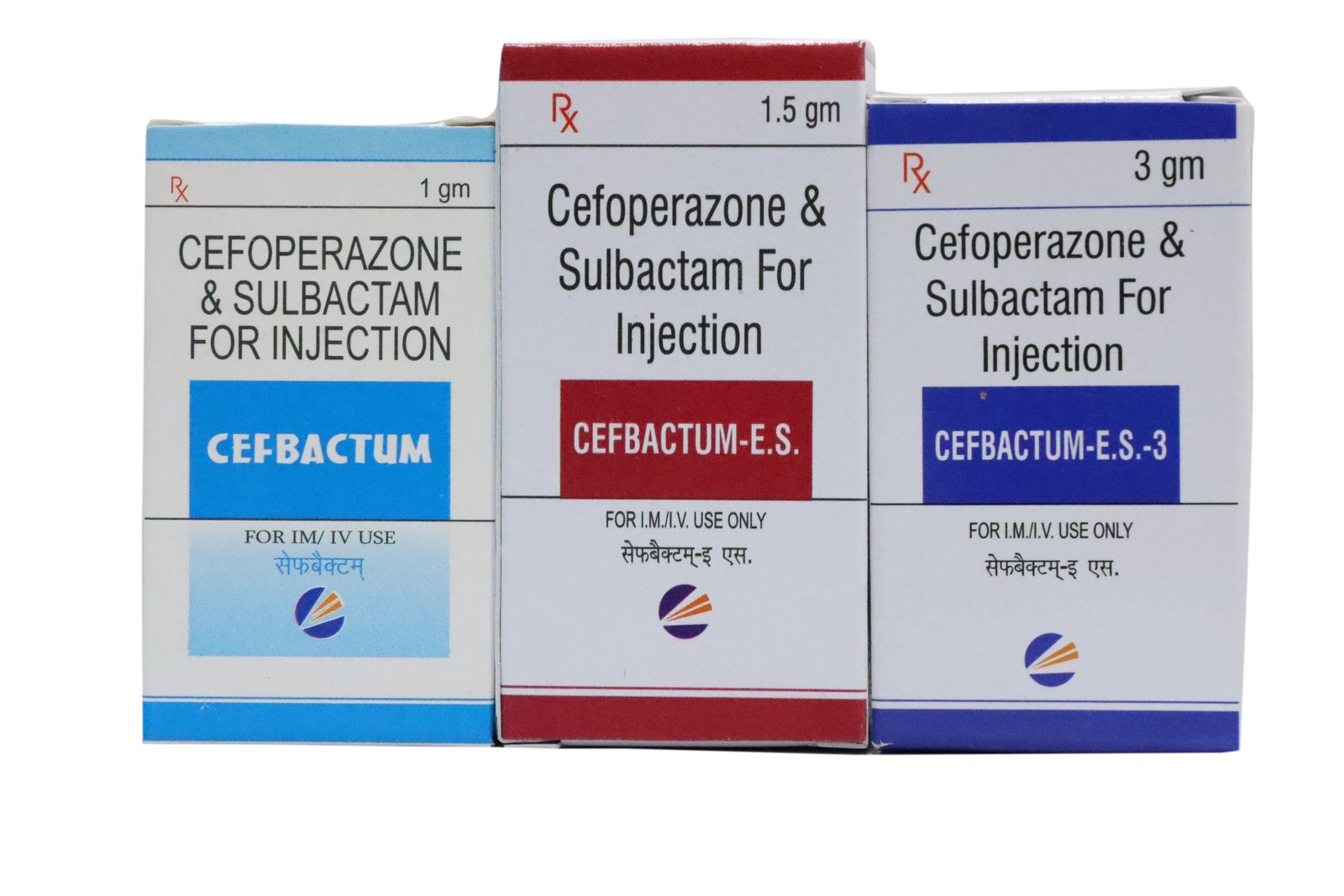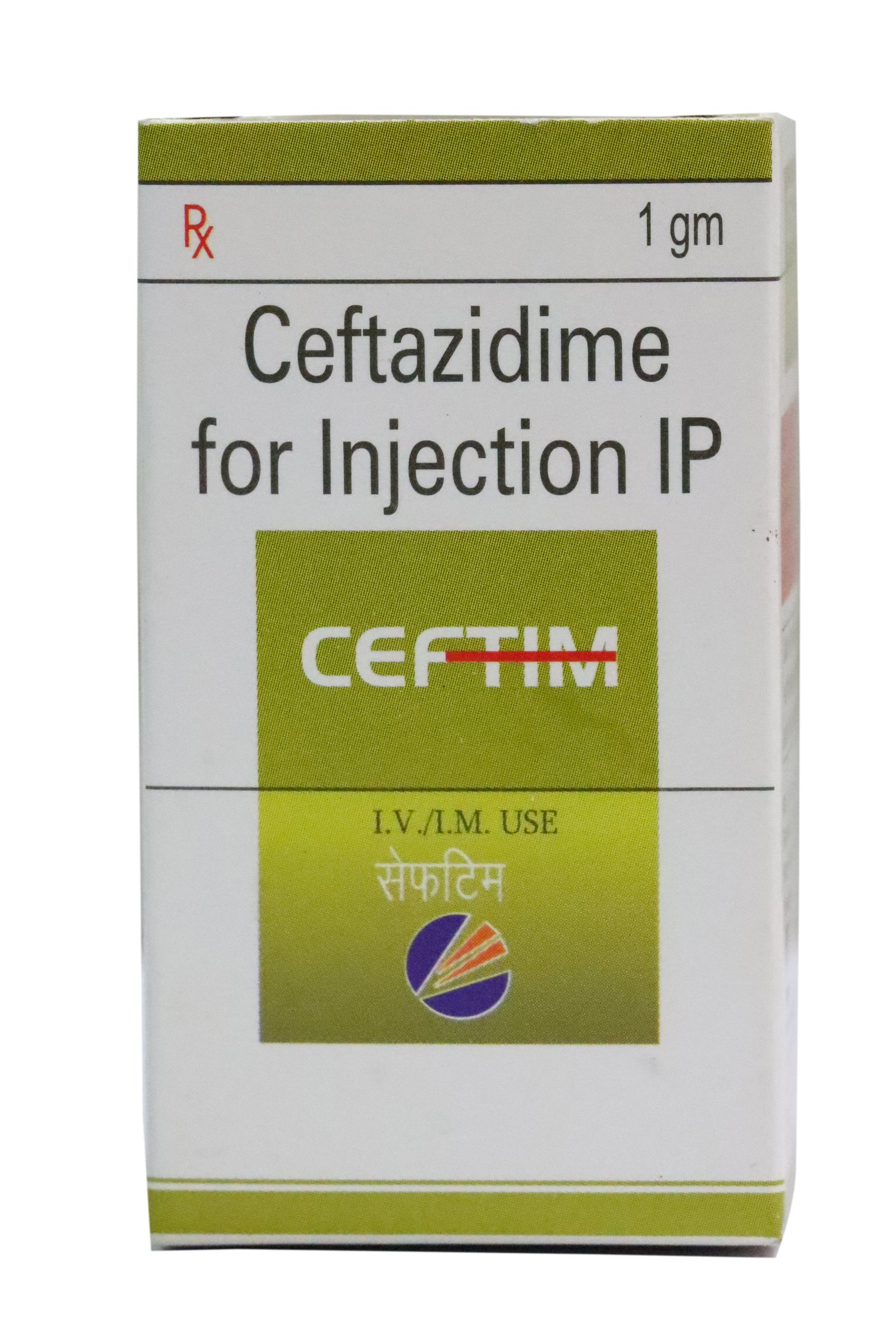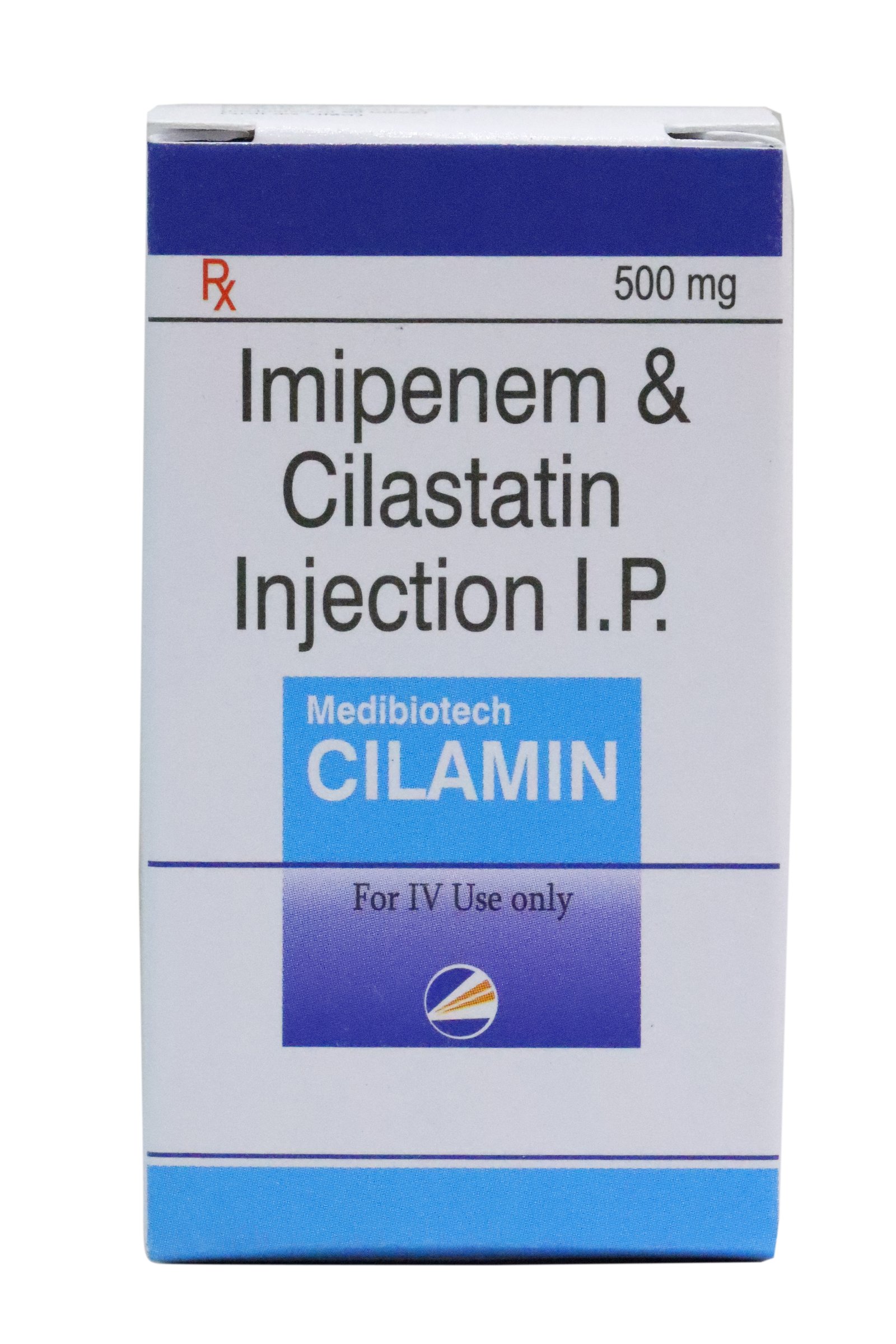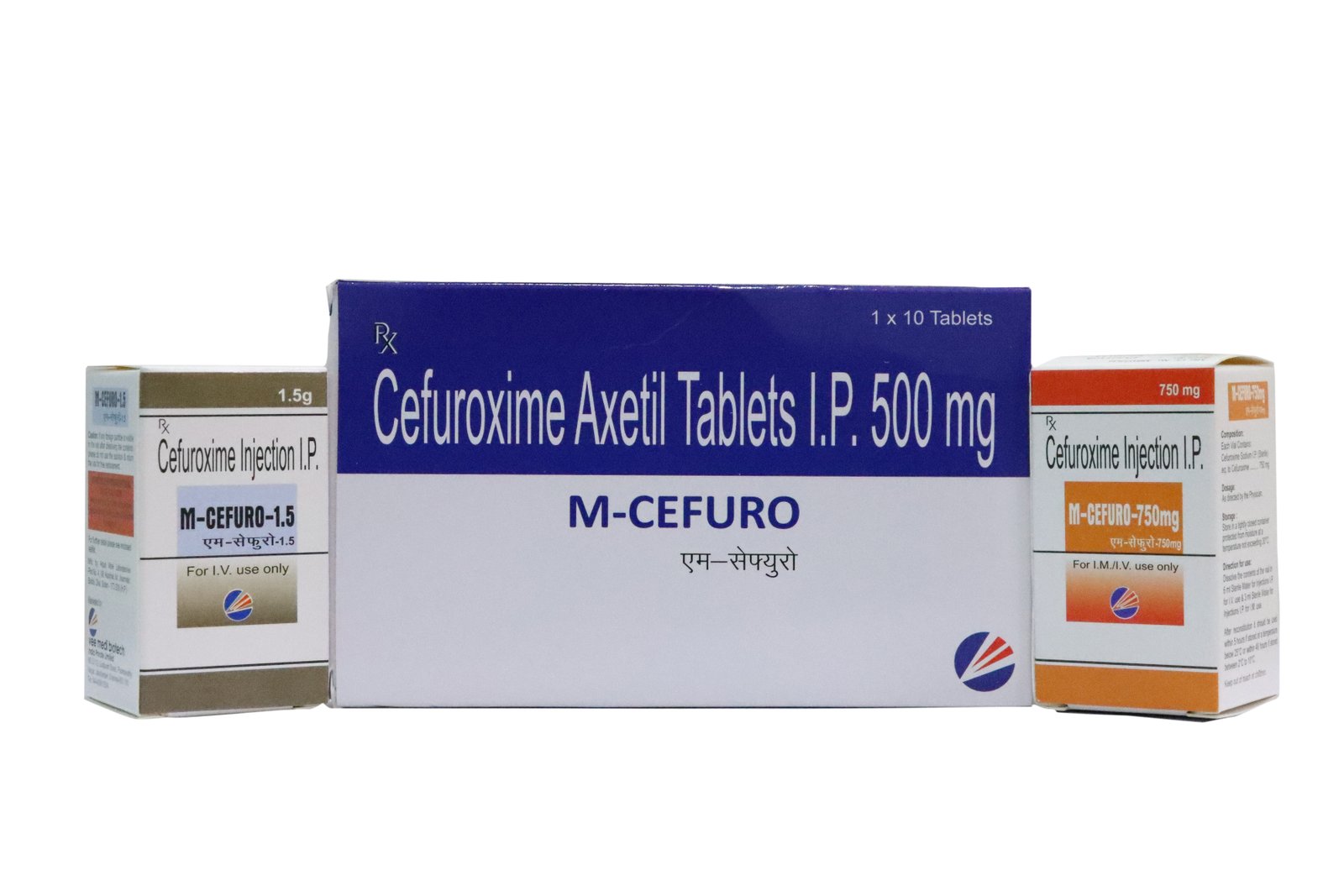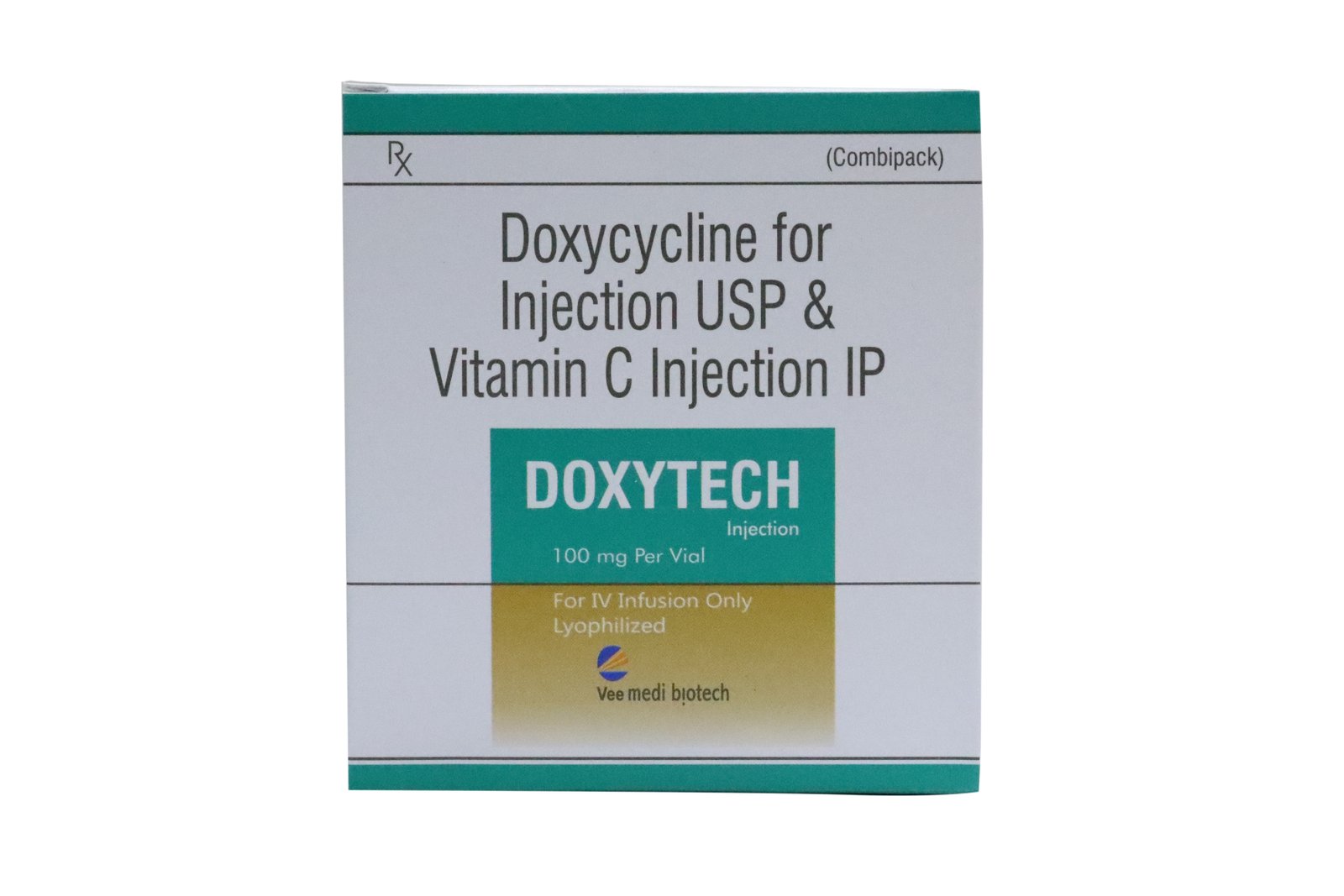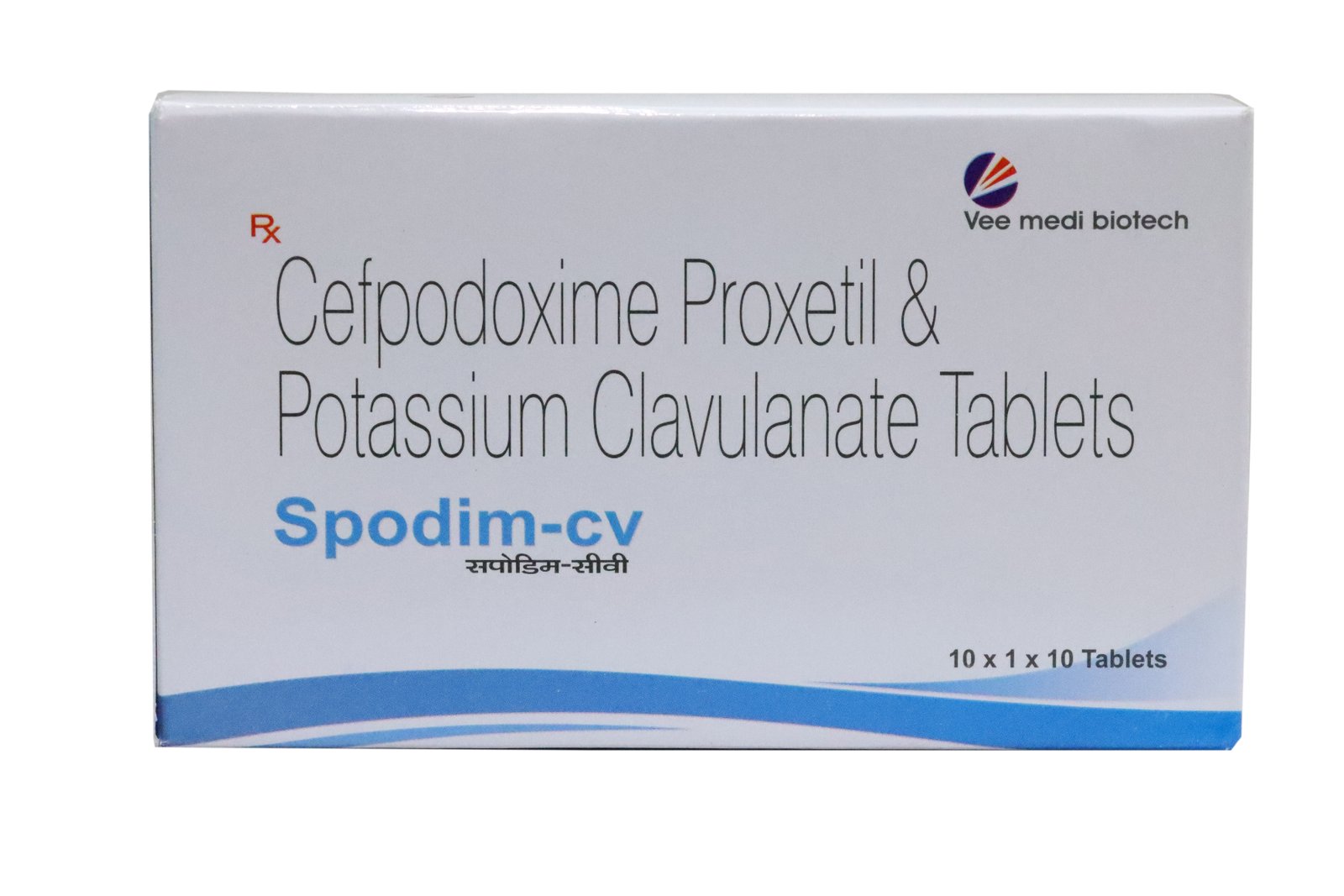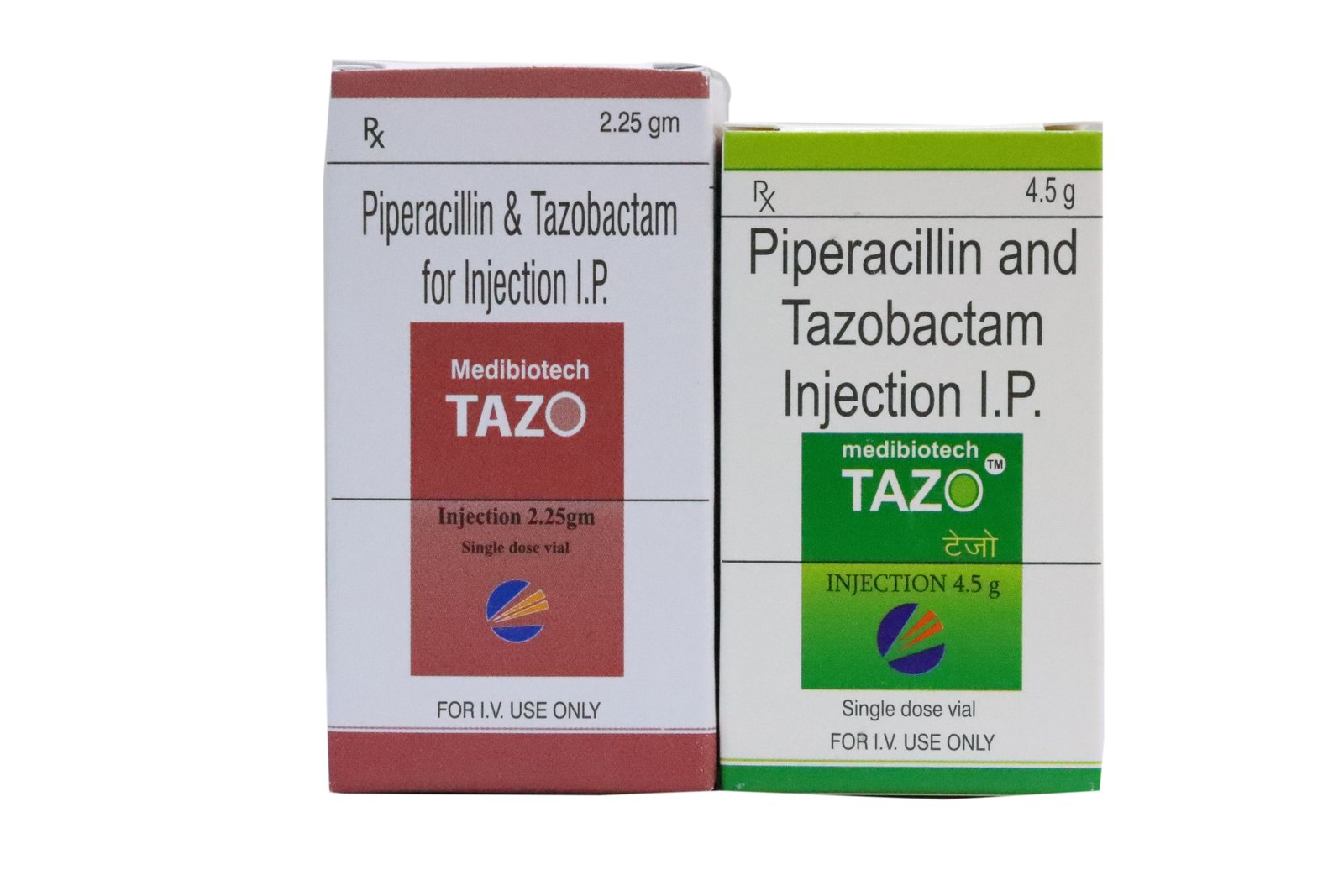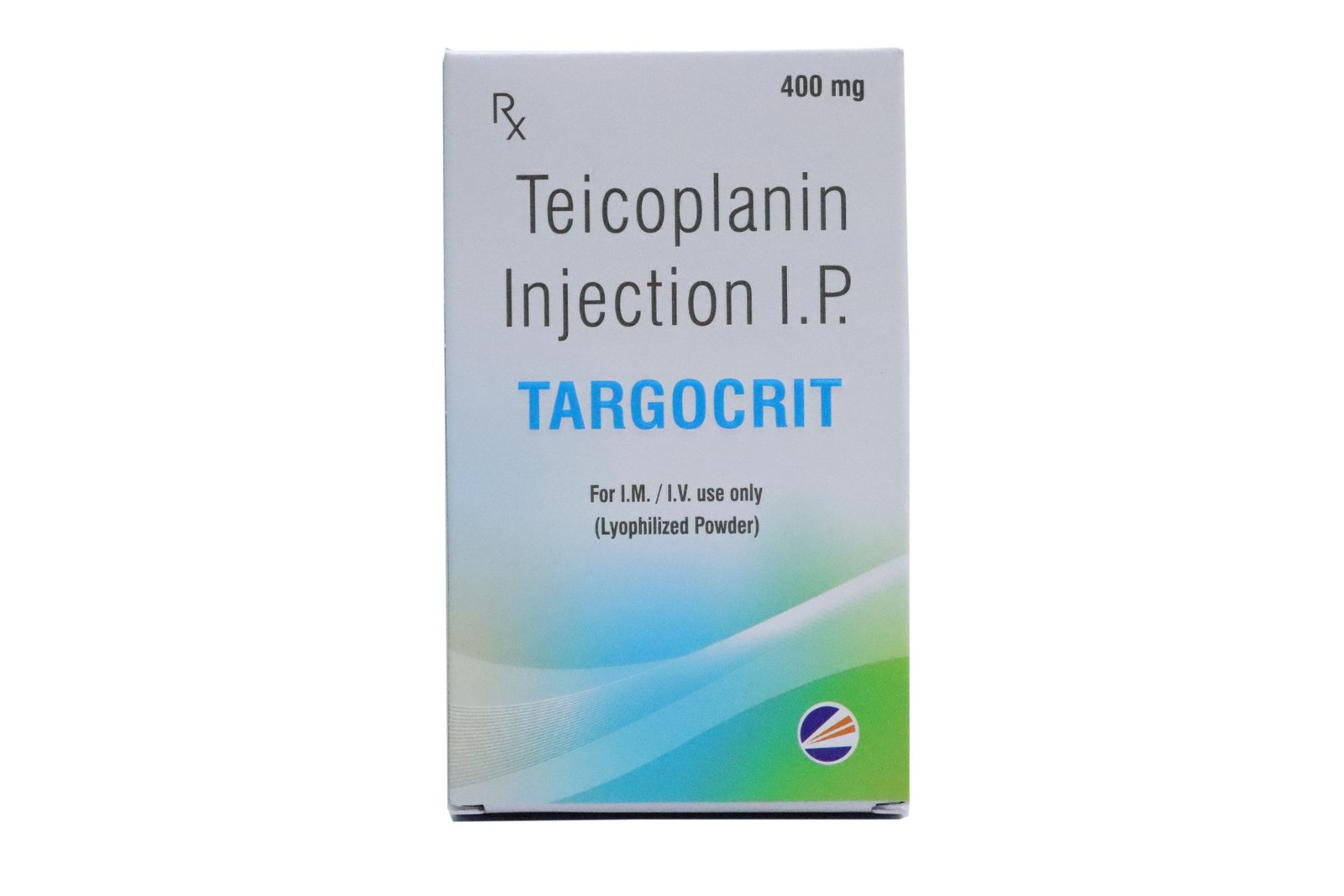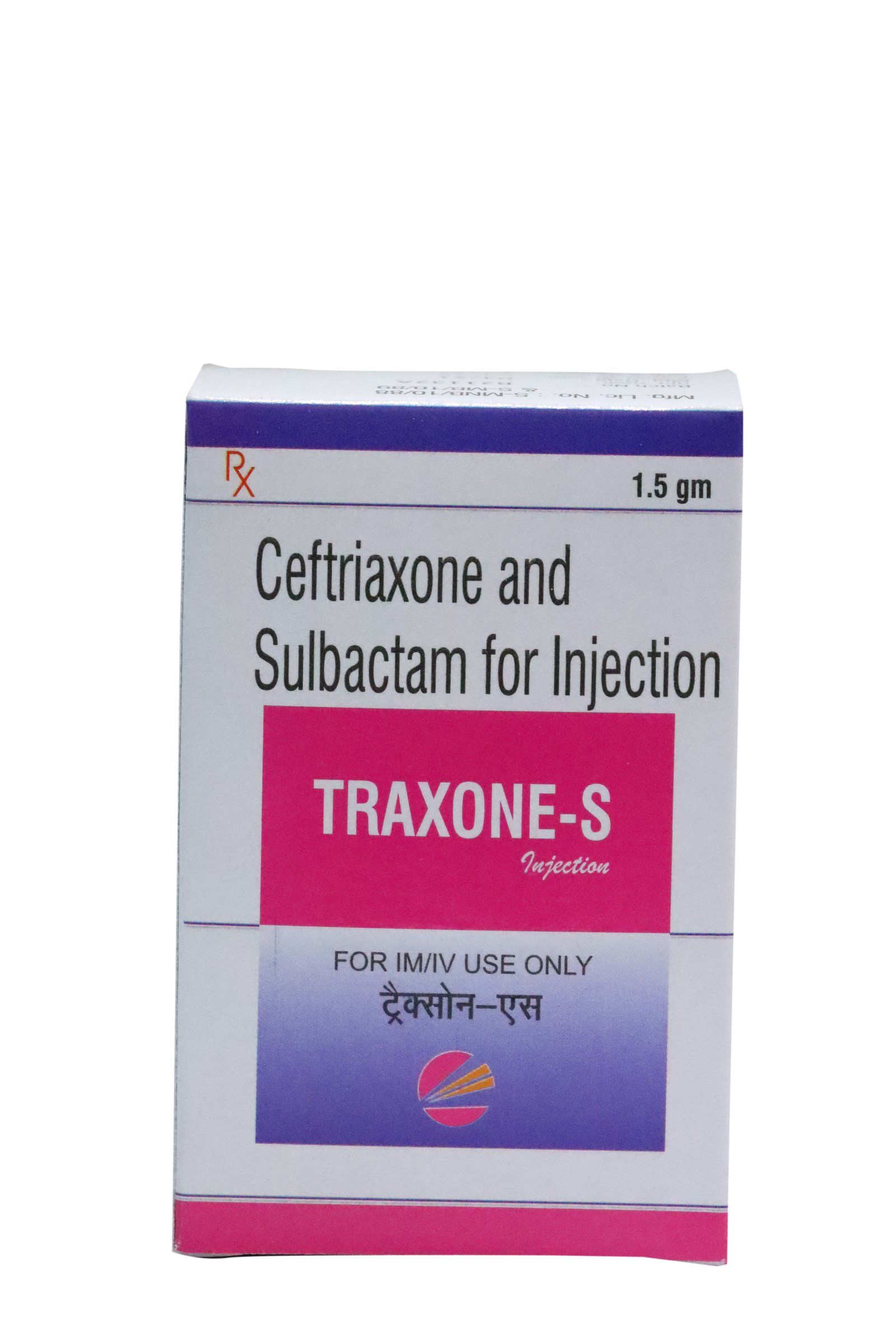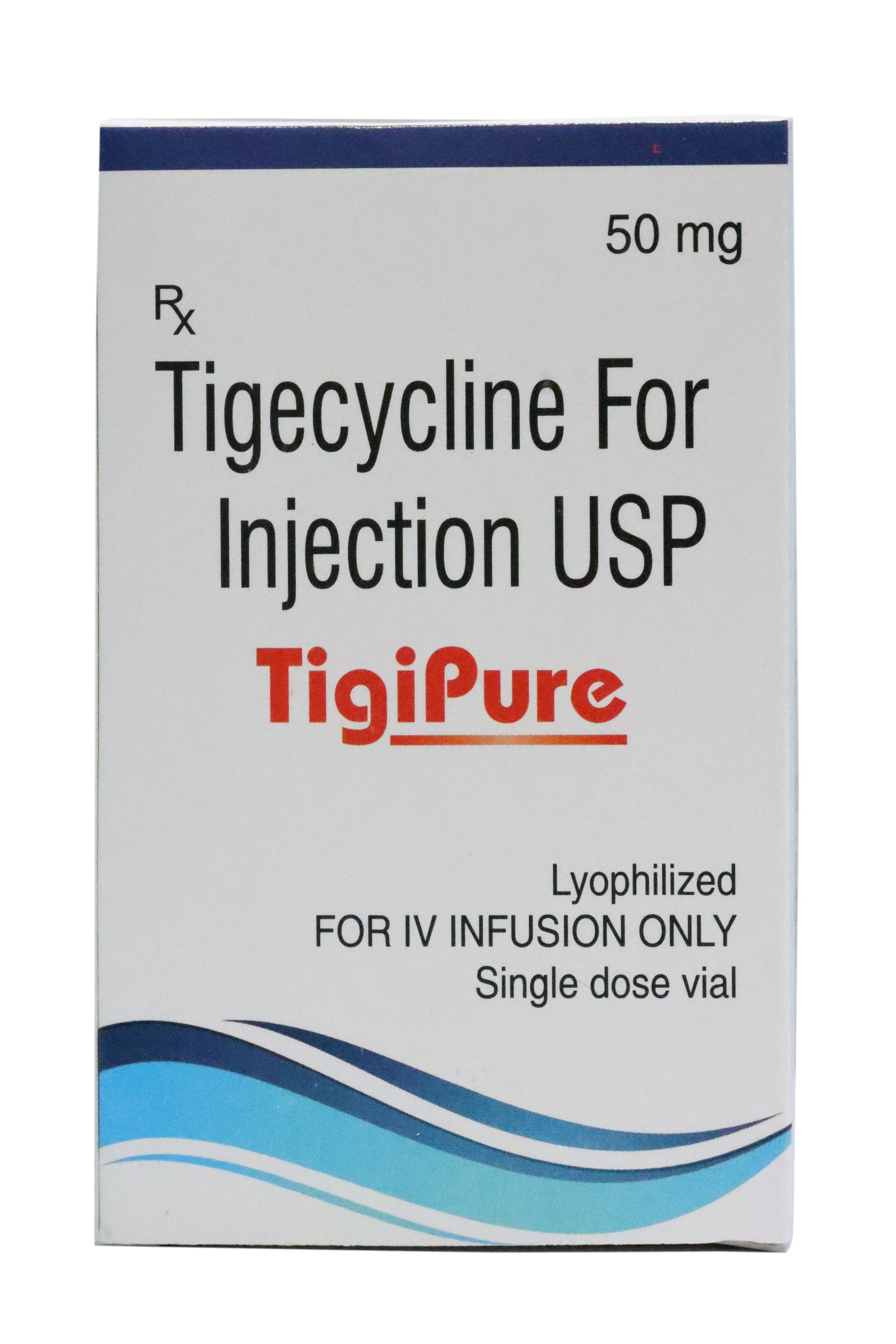Products
Summary
Amoxycillin + clavulanic acid Injection 1.2 g and Amoxycillin + Potassium Clavulanate Tablet
Broad-spectrum antibacterial Used to treat certain infections caused by bacteria, including infections of the ears, lungs, sinus, skin, and urinary tract Amoxicillin is a Penicillin-like antibiotics, with a broad spectrum of antibacterial activity against many gram-positive and gram-negative micro-organisms Clavulanic acid is called beta-lactamase inhibitors Works by preventing bacteria from destroying amoxicillin Clinically useful activity mainly against streptococci, staphylococci and gonococci Used sometimes to treat certain sexually transmitted diseases (STD). For Adults and children over 12 years, Usually 1.2 g eight hourly, In more serious infections, increase frequency to six-hourly intervals For Children 3 months-12 years, Usually 30 mg/kg eight hourly, In more serious infections, increase frequency to six-hourly intervals Dosage in Hepatic Impairment - Dose with caution; monitor hepatic function at regular intervals Dosage in severe renal impairment - 1.2 g IV stat, followed by 600 mg IV 24 hourly
Amoxycillin + Potassium Clavulanate Tablet
Is an antibiotic agent with a broad-spectrum of activity against commonly occurring bacterial pathogens in general practice and hospital. Beta-lactamase inhibitory action of clavulanate extends the spectrum of amoxycillin to embrace a wider range of organisms, including many resistant BACTERIA. Should be used in accordance with official antibiotic-prescribing guidelines and susceptibility data. Indicated for - Upper Respiratory Tract Infections (including ENT) e.g. recurrent tonsillitis, sinusitis, otitis media. Lower Respiratory Tract Infections e.g. acute exacerbation of chronic obstructive pulmonary disease (AECOPD)/acute exacerbation of chronic bronchitis (AECB), lobar and bronchopneumonia. Genito-urinary tract infections e.g. cystitis, urethritis, pyelonephritis. Skin and soft tissue infections e.g. boils, abscesses, cellulitis, wound infections. Bone and joint infections e.g. osteomyelitis. Dental infections e.g. dentoalveolar abscess. Other infections e.g. septic abortion, puerperal sepsis, intra-abdominal sepsis. Dosage depends on the age and renal function of the patient and the severity of the infection. Tablets to be consumed in whole, not to be broken. Treatment should not be extended beyond 14 days without review.
Tell your doctor and pharmacist if you are allergic to amoxicillin For more details see prescribing informationCefbactum 1 g , ES 1.5 g , ES 3 g Cefoperazone + sulbactum inj
Because of the broad-spectrum of activity of sulbactam/cefoperazone, most infections can be treated adequately with this antibiotic alone. Anti-bacterial component of sulbactam/cefoperazone is cefoperazone, a third generation cephalosporin, which acts against sensitive organisms during the stage of active multiplication by inhibiting biosynthesis of cell wall mucopeptide. Sulbactam does not possess any useful antibacterial activity, except against Neisseriaceae and Acinetobacter. Sulbactum is an irreversible inhibitor of most important beta-lactamases produced by beta-lactam antibiotic-resistant organisms. Beneficial for the treatment of the following infections when caused by susceptible organisms: Respiratory Tract Infections, Urinary Tract Infections (Upper and Lower), Intra-abdominal Infections, Septicemia, Meningitis, Skin and Soft Tissue Infections, Bone and Joint Infections, Endometritis and Other Infections of the Genital Tract. Usual adult dose of Sulbactam /Cefoperazone is 2 to 4 g per day (i.e. 1 to 2 g per day cefoperazone activity) given intravenously or intramuscularly in equally divided doses every 12 hours. In severe or refractory infections the daily dosage of sulbactam/cefoperazone may be increased up to 8 g (i.e., 4 g cefoperazone activity) given intravenously in equally divided doses or 12 g of the 1:2 ratio. Dose modification may be necessary in cases of severe biliary obstruction, severe hepatic disease or in cases of renal dysfunction coexistent with either of those conditions. Tell your doctor and pharmacist if you are allergic to sulbactam/cefoperazone. For more details see prescribing information
Ceftim 1 g Ceftazidime 1 g inj
Ceftazidime is an Antibacterial; betalactam antibiotic; third generation cephalosporin. Beneficial in Bone and Joint Infections, Intra-abdominal and Gynecologic Infections, Meningitis and Other CNS Infections, Respiratory Tract Infections, Septicemia, Skin and Skin Structure Infections, Urinary Tract Infections (UTIs), Pseudomonas aeruginosa Infections, Empiric Therapy in Febrile Neutropenic Patients, Perioperative Prophylaxis in vaginal hysterectomy, biliary or intra-abdominal surgery, or transurethral resection of the prostate. General Adult Dosage - Less Severe Infections - IV or IM 1 g every 8–12 hours. Severe or life-threatening Infections IV 2 g every 8 hours, especially in immunocompromised patients. Bone and Joint Infections IV 2 g every 12 hours. Intra-abdominal and Gynecologic Infections Serious Infections IV 2 g every 8 hours. Meningitis IV 2 g every 8 hours. Duration of treatment is ≥3 weeks for meningitis caused by susceptible gram-negative bacilli. Pseudomonas Lung Infections in Cystic Fibrosis Patients IV 30–50 mg/kg every 8 hours (up to 6 g daily). Hepatic Impairment - Dosage adjustments not required unless renal function also impaired. Renal Impairment - Reduce dosage in patients with CREATININE clearance ≤50 mL/minute. Tell your doctor and pharmacist if you are allergic to Ceftazidime . For more details see prescribing information
Cilamin 1 g Imipenem + cilastatin 1 g inj
Is an Antibacterial; fixed combination of imipenem (a carbapenem betalactam antibiotic) and cilastatin (a renal dehydropeptidase inhibitor that prevents renal metabolism of imipenem). Beneficial in Bone and Joint Infections, Endocarditis, Gynecologic Infections, Intra-abdominal Infections, Respiratory Tract Infections, Septicemia, Skin and Skin Structure Infections, Urinary Tract Infections (UTIs), Mycobacterial Infections, Empiric Therapy in Febrile Neutropenic Patients. Dosage of imipenem (given as imipenem/cilastatin) recommended in adults is based on imipenem susceptibility of the suspected or confirmed causative organism(s) and the patient's renal function.Dosage of imipenem (given as imipenem/cilastatin) recommended in adults is based on imipenem susceptibility of the suspected or confirmed causative organism(s) and the patient's renal function. Infections Suspected or Proven to be Caused by Susceptible Bacteria IV for Adults: 500 mg every 6 hours or 1 g every 8 hours. Infections Suspected or Proven to be Caused by Bacteria with Intermediate Susceptibility IV for Adults: 1 g every 6 hours. Empiric Therapy in Febrile Neutropenic Patients IV 500 mg every 6 hours (1 g daily) has been recommended.Dosage of imipenem (given as imipenem/cilastatin) must be reduced in adults with Creatinine clearance 90 mL/minute. Tell your doctor and pharmacist if you are allergic to Imipenem + cilastatin. For more details see prescribing information
M Cefuro Cefuroxime sodium Injection 750 mg , 1.5 g inj
Bactericidal cephalosporin antibiotic, effective antibacterial agent including to resistant beta-lactamases producing bacteria and is active against a wide range of Gram-positive and Gram-negative organisms. Beneficial in respiratory tract infections - acute exacerbation of chronic bronchitis, infected bronchiectasis, bacterial pneumonia, lung abscess and post-operative chest infections, sinusitis, tonsillitis, pharyngitis and otitis media, acute and chronic pyelonephritis, cystitis and asymptomatic bacteriuria, soft-tissue infections for example, cellulitis, erysipelas and wound infections, osteomyelitis and septic arthritis, obstetric and gynaecological infections, pelvic inflammatory diseases, gonorrhoea particularly when penicillin is unsuitable, septicaemia, meningitis, prophylaxis against infection in abdominal, pelvic, orthopaedic, cardiac, pulmonary, oesophageal and vascular surgery where there is increased risk from infection. Respond to 750mg three times daily by IM or IV injection. For more severe infections the dose should be increased to 1.5g three times daily given IV. The frequency of administration may be increased to 6-hourly if necessary, giving total daily doses of 3 to 6 g. For renal impairment It is not necessary to reduce the standard dose (750 mg to 1.5 g three times daily) until the creatinine clearance falls to 20ml/min or below.
M Cefuro Cefuroxime axetil 500 mg tablet
Cefuroxime axetil 500 mg tablet Cefuroxime is a well characterised and effective antibacterial agent has bactericidal activity against a wide range of common pathogens, including beta-lactamase producing strains. Cefuroxime has good stability to bacterial beta-lactamase, and consequently is active against many ampicillin-resistant or amoxycillin-resistant strains. The bactericidal action of cefuroxime results from inhibition of cell wall synthesis by binding to essential target proteins. Beneficial for the treatment of Upper respiratory tract infections (for example: ear, nose and throat infections, such as otitis media, sinusitis, tonsillitis and pharyngitis), Lower respiratory tract infections (for example: pneumonia, acute exacerbations of chronic obstructive pulmonary disease), Genito-urinary tract infections (for example: pyelonephritis, cystitis and urethritis), Skin and soft tissue infections (for example: furunculosis, pyoderma and impetigo), Gonorrhoea, acute uncomplicated gonococcal urethritis and cervicitis. dosage - Acute otitis media - 500 mg twice daily, Acute bacterial sinusitis - 500 mg twice daily, Community acquired pneumonia - Acute exacerbations of chronic obstructive pulmonary disease, Urinary tract infections - 250 mg – 500 mg twice daily, Uncomplicated gonorrhea - single dose of 1 g, Skin and soft tissue infections - 250 mg – 500 mg twice daily For renal impairment – Creatinine Clearance Recommended Dosage ≥30 ml/min No dose adjustment necessary standard dose of 125 mg to 500 mg given twice daily 10-29 ml/min Standard individual dose given every 24 hours 10 ml/min Standard individual dose given every 48 hours During haemodialysis. A single additional standard individual dose should be given at the end of each dialysis.
Tell your doctor and pharmacist if you are allergic to Cefuroxime . For more details see prescribing informationDoxycycline 100 mg inj
Semisynthetic tetracycline antibiotic. Doxycycline is primarily bacteriostatic and thought to exert its antimicrobial effect by the inhibition of protein synthesis. Doxycycline is active against a wide range of gram positive and gram-negative organisms. Beneficial to treat or prevent bacterial infections, including pneumonia and other respiratory tract infections, also used to treat certain skin, genital, intestine, and urinary system infections. The usual dosage of Doxycycline I.V. is 200 mg on the first day of treatment administered in one or two infusions. Subsequent daily dosage is 100 to 200 mg , depending upon the severity of infection, with 200 mg administered in one or two infusions. In the treatment of primary and secondary syphilis, the recommended dosage is 300 mg daily for at least 10 days. The duration of infusion may vary with the dose (100 to 200 mg per day), but is usually one to four hours. A recommended minimum infusion time for 100 mg of a 0.5 mg/mL solution in one hour. Therapy should be continued for at least 24-48 hours after symptoms and fever have subsided.
Tell your doctor and pharmacist if you are allergic to Doxycycline. For more details see prescribing information
Tazo 2.25 g, 4.5 g injection
Piperacillin + tazobactum, Piperacillin/Tazobactam injection Antibacterial; β-lactam antibiotic; fixed combination of Piperacillin (an extended-spectrum penicillin) and tazobactam (a β-lactamase inhibitor). Beneficial in Respiratory Tract Infection, Intra-abdominal Infections, Septicemia, Skin and Skin Structure Infections, Urinary Tract Infections, Empiric Therapy in Febrile Neutropenic Patients, Perioperative Prophylaxis. Adult dosage , 4.5 g every 6 hours for 7–10 days. Initial empiric treatment of nosocomial pneumonia, every 6 hours for 7–14 days; used in conjunction with an aminoglycoside. Hepatic Impairment, Dosage adjustments not needed. Dosage in adults with Clcr ≤40 mL/minute, including those undergoing hemodialysis or CAPD, 2.25 g every 6 hours.
Targocrit
Teicoplanin 400 mg injection, Teicoplanin is a glycopeptide antibiotic that has shown in vitro bactericidal activity against both aerobic and anaerobic gram-positive organisms. Teicoplanin inhibits the growth of susceptible organisms by interfering with cell-wall biosynthesis at a site different from that affected by beta-lactams. Active against staphylococci (including those resistant to methicillin and other beta-lactam antibiotics), streptococci, enterococci. Beneficial in serious gram +ve infections, serious staphylococcal infections in patients sensitive or unresponsive to penicillins and cephalosporins, CAPD related peritonitis, prophylaxis in orthopaedic surgery at risk of gram +ve infections. Dosage for most gram-positive infections: loading regimen of three 12-hourly doses of 400 mg IV, followed by a maintenance dose of 400 mg IV or IM once daily. No dose adjustment required, unless there is renal impairment. mild renal insufficiency (Cr Cl between 40 to 60 mL/min): maintenance dose should be halved, either by administering the usual recommended dose every 2 days, or administering one-half the dose daily. severe renal insufficiency (Cr Cl 40 mL/min) and in hemodialyzed patients: maintenance dose should be one third the usual recommended dose, either by administering the dose every third day, or administering one-third of the dose daily.
Tigipure
Tigecycline 50 mg injection, Tigecycline 50 mg injection Tigecycline, a derivative of the tetracycline minocycline, is the first available glycylcycline antibiotic. Tigecycline inhibits protein synthesis by binding to the 30S ribosomal subunit. It is bacteriostatic. Tigecycline is effective against many resistant bacteria, including those with resistance to tetracyclines. Tigecycline is indicated for Complicated skin and soft-tissue infections, Complicated intra-abdominal infections. Community-acquired pneumonia. Adult dosage, Initial dose of 100 mg, followed by 50 mg every 12 hours. Recommended duration of treatment is 5–14 days. Hepatic Impairment Mild to moderate hepatic impairment, Dosage adjustments not necessary. Severe hepatic impairment, Initial dose of 100 mg in adults, followed by 25 mg every 12 hours. Renal Impairment, Dosage adjustments not necessary in patients with renal impairment or undergoing hemodialysis.
Azoget
Aztreonam 1 g injection
Augumed 625 Tablet
Amoxycillin + Potassium Clavulanate Tablet Is an antibiotic agent with a broad-spectrum of activity against commonly occurring bacterial pathogens in general practice and hospital. Beta-lactamase inhibitory action of clavulanate extends the spectrum of amoxycillin to embrace a wider range of organisms, including many resistant BACTERIA. Should be used in accordance with official antibiotic-prescribing guidelines and susceptibility data. Indicated for - Upper Respiratory Tract Infections (including ENT) e.g. recurrent tonsillitis, sinusitis, otitis media. Lower Respiratory Tract Infections e.g. acute exacerbation of chronic obstructive pulmonary disease (AECOPD)/acute exacerbation of chronic bronchitis (AECB), lobar and bronchopneumonia. Genito-urinary tract infections e.g. cystitis, urethritis, pyelonephritis. Skin and soft tissue infections e.g. boils, abscesses, cellulitis, wound infections. Bone and joint infections e.g. osteomyelitis. Dental infections e.g. dentoalveolar abscess. Other infections e.g. septic abortion, puerperal sepsis, intra-abdominal sepsis. Dosage depends on the age and renal function of the patient and the severity of the infection. Tablets to be consumed in whole, not to be broken. Treatment should not be extended beyond 14 days without review. Tell your doctor and pharmacist if you are allergic to amoxicillin. For more details see prescribing information
Augumed
Amoxycillin + clavulanic acid Injection 1.2 g Broad-spectrum antibacterial Used to treat certain infections caused by bacteria, including infections of the ears, lungs, sinus, skin, and urinary tract Amoxicillin is a Penicillin-like antibiotics, with a broad spectrum of antibacterial activity against many gram-positive and gram-negative micro-organisms Clavulanic acid is called beta-lactamase inhibitors Works by preventing bacteria from destroying amoxicillin Clinically useful activity mainly against streptococci, staphylococci and gonococci Used sometimes to treat certain sexually transmitted diseases (STD). For Adults and children over 12 years, Usually 1.2 g eight hourly, In more serious infections, increase frequency to six-hourly intervals For Children 3 months-12 years, Usually 30 mg/kg eight hourly, In more serious infections, increase frequency to six-hourly intervals Dosage in Hepatic Impairment - Dose with caution; monitor hepatic function at regular intervals Dosage in severe renal impairment - 1.2 g IV stat, followed by 600 mg IV 24 hourly Tell your doctor and pharmacist if you are allergic to amoxicillin For more details see prescribing information
